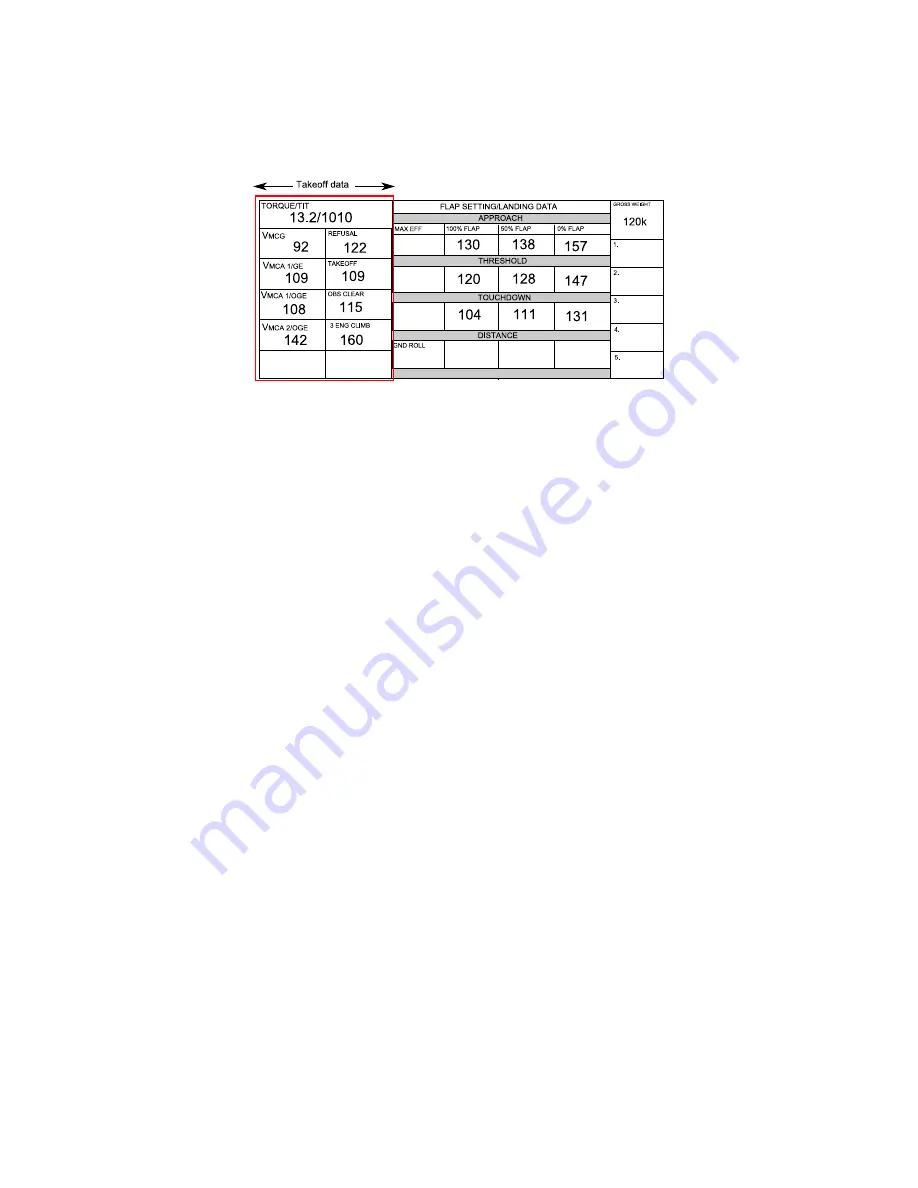
46
TAKEOFF
The Flight Engineer computes takeoff and landing data (TOLD) and provides a pilot information
card. The takeoff data is shown on the left side of the card, landing data in the center. The
important speeds (takeoff, two-engine VMCA) should be memorized before takeoff:
The takeoff thrust setting used to compute the takeoff data is shown in the upper left, and
consists of both a TIT and torque setting. For light weight takeoffs, reduced thrust is used (TIT
set to 970 or 1010). When a reduced thrust takeoff is performed, the pilot sets the target TIT,
however, it is important to make sure you crosscheck that the engines are all meeting the
predicted torques.
When a full power takeoff is required, the engines should be set prior to brake release if possible.
Because of the torque increases ~600 inch-pounds as the aircraft accelerates (“Ram rise”),
18,800-19,000 inch –pounds should be set statically. When full power is required, both engine
limitations must be closely monitored to avoid exceedances:
Torque:
19,600
in-lbs. maximum
Turbine inlet temperature (“TIT”):
1083º
maximum.
A normally functioning temperature datum (TD) system will protect the
1083º
maximum TIT
limit.
There is no protection of the 19,600 in-lbs maximum torque limit
, and at cooler
ambient temperatures the characteristics of the engine make it easy to exceed
19,600
in-lbs and
over torque the engine.
The torque indication lags throttle advancement, so it is very easy to overshoot the intended
torque. At the extreme forward thrust position, the torque output is very sensitive to small
throttle movements.
Advance the throttles at a maximum of 1 inch/sec.
The fuel control is
mechanical/analog and responds slowly compared to modern fuel controls. When advancing to
maximum thrust, slow the rate of advance as you get close to the torque limits. The following
diagram shows a 1,200 to 1,500 inch-pound torque overshoot (red line) from a flight idle to
takeoff power throttle transient. The throttle was moved from flight idle to takeoff power in 2
seconds:














































